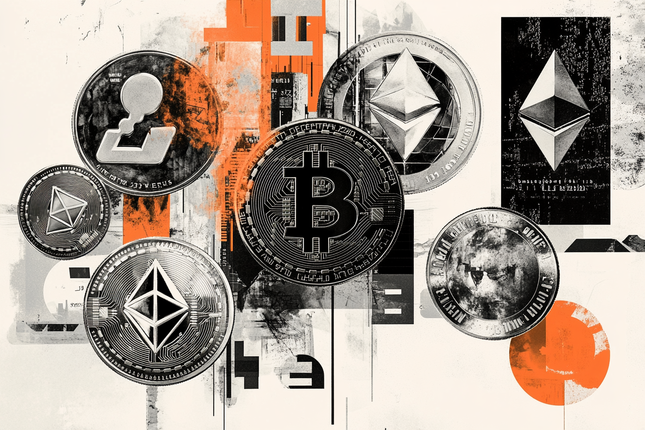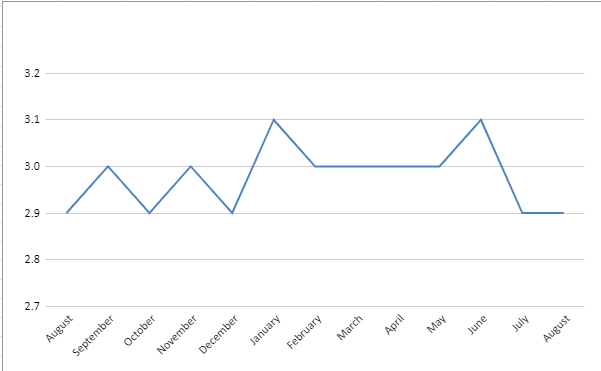- The University of Michigan is expected to edge up, but all eyes are on inflation expectations.
- Three days after the shocking CPI report, investors are closely watching every related figure.
- Any 0.1% deviation in long-term inflation expectations could trigger major dollar moves.
Early fireworks on Friday – that is what US Consumer Sentiment Index promises traders, and for several good reasons. It is hard to exaggerate the spotlight put on this release.
The University of Michigan's preliminary gauge for September is set to rise to 60, from 58.2 in the final read for August, but the main focus is on long-term inflation expectations, which stood at 2.9% in August.
Why is it so important? It is because Federal Reserve Chair Jerome Powell said so. Back in June, he dwelled upon the surprising increase in that month's measure to justify a last-minute shift in policy. The Fed hiked by 75 bps instead of the 50 bps initially telegraphed.
Will the bank opt for a jumbo 100 bps increase next week? At the time of writing, markets are pricing in a 30% chance of such a move happening – a relatively high chance that leaves room for volatility in both directions.
A quadruple-sized hike seemed off the cards until US inflation smashed estimates in a release earlier this week. The Core Consumer Price Index (Core CPI) MoM printed 0.6%, which was double the earlier expectations and obliterating investors that had bet on the narrative of peak inflation and peak Fed hawkishness.
The baseline scenario remains a third consecutive triple-sized 75 bps increase in borrowing costs, but uncertainty is much higher than beforehand. The Fed's silence – due to its self-imposed blackout period ahead of the decision – adds to tensions.
All in all, the timing of the publication, sandwiched between the shocking CPI report and the Fed decision, and ahead of the weekend, promises wild action.
Trading the data
As I have described above, the most important figure is long-term inflation expectations. These stood at 2.9% in August, at the bottom of the 2.9-3.1% range recorded in the past 12 months.
Here are three simple scenarios:
1) An increase: A 3% print or higher would signal faster price rises are becoming anchored, or entrenched in Americans' minds, and that it would take higher rates to crush them.
Odds of a 100 bps hike would rise and investors would wait for the Fed to leak it changed its intentions. The dollar would jump and stocks would tumble.
2) A drop: If the figure comes out at 2.8% or lower, it would indicate that the drop in gasoline prices and the Fed's hikes have impacted consumers' expectations and that future inflation could be lower. It would allow the Fed to slow down the pace of tightening.
The dollar would tumble on firming expectations for a 75 bps hike, and stocks would advance. More importantly, expectations for the peak rate would decline as well.
3) Unchanged: A 2.9% read would be neutral, but markets cannot be on the sidelines, and they will have to pick a side. In this case, the fact that inflation expectations have remained stable in September despite a jump in inflation during August would probably be seen as positive for stocks and would weigh on the dollar.
Final thoughts
If you are asking yourself: I understand the importance of the figure and the straightforwardness of the trade, but what does this analyst think the outcome will be? My answer is: I do not know. It is essential to remember that the preliminary estimates have been revised either up or down in the final publications. It is easier to bet on a scenarios of a change from last month's 2.9% than a repeat.
However, if pushed to a corner, I think the drop in gasoline prices has impacted consumers' minds more than the rise in everything else. That could trigger a 2.8% print and send the dollar down – at least temporarily.
Information on these pages contains forward-looking statements that involve risks and uncertainties. Markets and instruments profiled on this page are for informational purposes only and should not in any way come across as a recommendation to buy or sell in these assets. You should do your own thorough research before making any investment decisions. FXStreet does not in any way guarantee that this information is free from mistakes, errors, or material misstatements. It also does not guarantee that this information is of a timely nature. Investing in Open Markets involves a great deal of risk, including the loss of all or a portion of your investment, as well as emotional distress. All risks, losses and costs associated with investing, including total loss of principal, are your responsibility. The views and opinions expressed in this article are those of the authors and do not necessarily reflect the official policy or position of FXStreet nor its advertisers. The author will not be held responsible for information that is found at the end of links posted on this page.
If not otherwise explicitly mentioned in the body of the article, at the time of writing, the author has no position in any stock mentioned in this article and no business relationship with any company mentioned. The author has not received compensation for writing this article, other than from FXStreet.
FXStreet and the author do not provide personalized recommendations. The author makes no representations as to the accuracy, completeness, or suitability of this information. FXStreet and the author will not be liable for any errors, omissions or any losses, injuries or damages arising from this information and its display or use. Errors and omissions excepted.
The author and FXStreet are not registered investment advisors and nothing in this article is intended to be investment advice.
Recommended Content
Editors’ Picks

EUR/USD remains capped below 1.1400, bullish bias prevails
The EUR/USD pair attracts some sellers to near 1.1375 during the Asian session on Tuesday. The Euro weakens against the Greenback amid rising expectations of further rate cuts from the European Central Bank in June and mixed signals on US-China trade relations.

GBP/USD declines below 1.3450 ahead of BoE’s Ramsden speech
The GBP/USD pair attracts some sellers to near 1.3425 during the Asian trading hours on Tuesday, pressured by a modest rebound of US Dollar. Investors await a speech by Bank of England official Dave Ramsden for fresh impetus.

Gold price slides back closer to $3,300 amid tariff deals optimism
Gold price drifts lower as signs of easing US-China trade tensions undermine safe-haven demand. The USD reverses a part of the overnight slide and exerts additional pressure on the XAU/USD pair. Fed rate cut bets might cap the USD and help limit losses for the commodity amid geopolitical risks.

Top gainers Virtuals Protocol, Floki, Hyperliquid: Altcoins extend gains alongside Bitcoin
The cryptocurrency market sustains a market-wide bullish outlook, led by Bitcoin and select altcoins, including Virtuals Protocol, Floki, and Hyperliquid. Global markets continue to respond positively to the possibility of trade tensions de-escalation between the United States and China.

Week ahead: US GDP, inflation and jobs in focus amid tariff mess – BoJ meets
Barrage of US data to shed light on US economy as tariff war heats up. GDP, PCE inflation and nonfarm payrolls reports to headline the week. Bank of Japan to hold rates but may downgrade growth outlook. Eurozone and Australian CPI also on the agenda, Canadians go to the polls.

The Best brokers to trade EUR/USD
SPONSORED Discover the top brokers for trading EUR/USD in 2025. Our list features brokers with competitive spreads, fast execution, and powerful platforms. Whether you're a beginner or an expert, find the right partner to navigate the dynamic Forex market.
